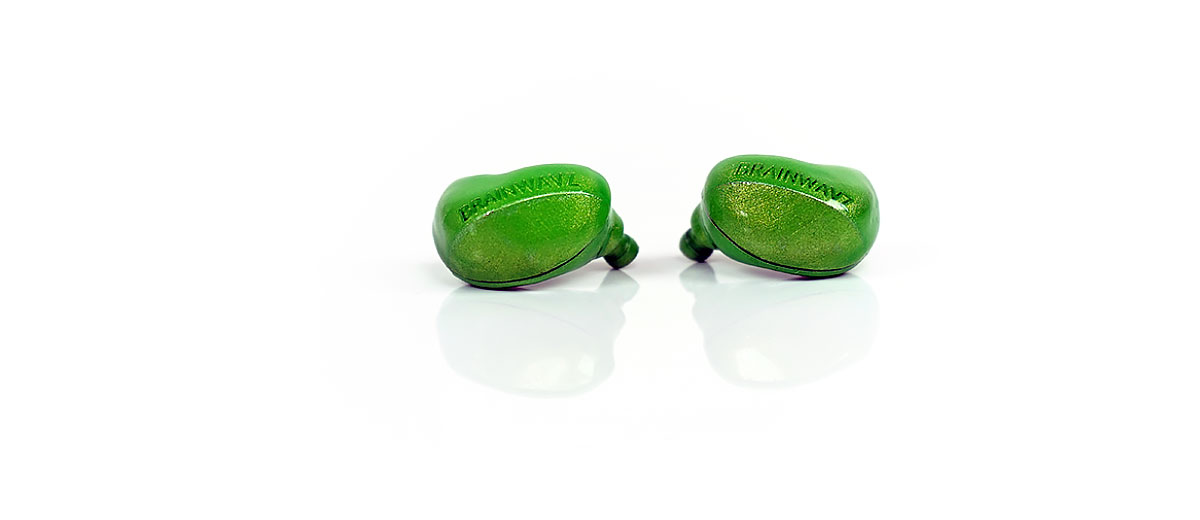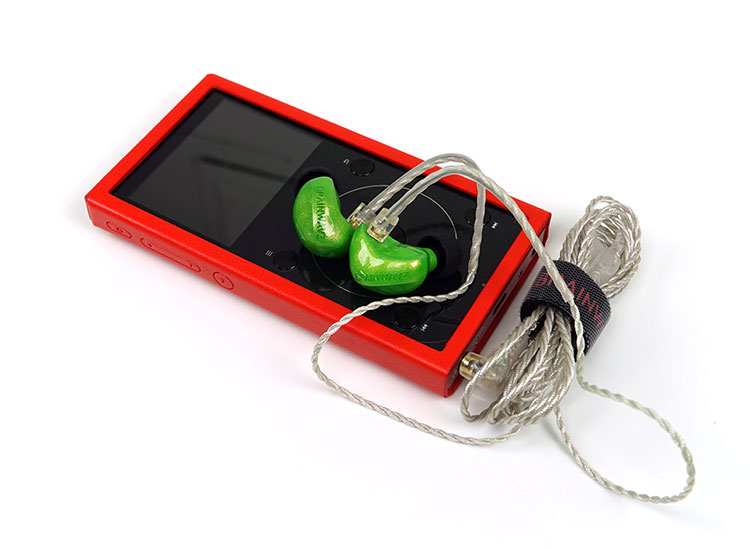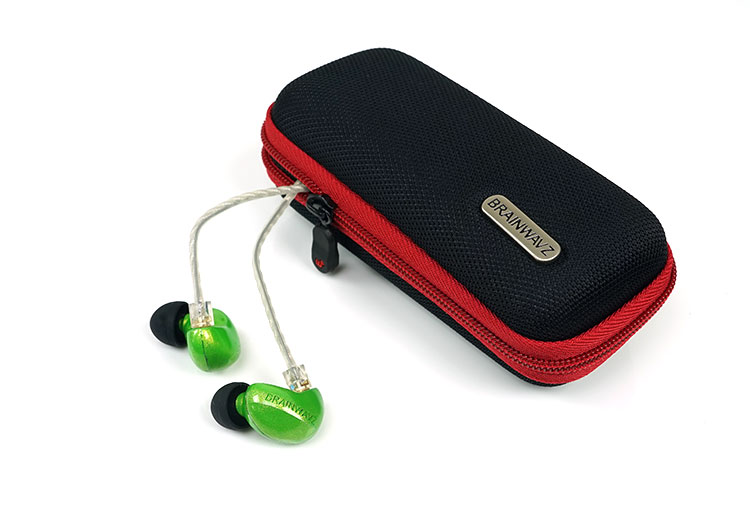Sound Impressions
Tonality & Presentation
Tonally, the B400 has a mild u-shaped frequency response with a full sounding mid-bass and reasonable sub-bass presence. It delivers a very mildly dipped lower midrange combined with a forward sounding mids to upper mids presence, in particular, female vocals.
The B400 is very smooth to my ears with a natural to slightly warm timbre and is immensely forgiving sounding with just about anything you can throw at it. As such the B400 moves away from the more positioning of the B200 and adds a little more coloration and “fun” into its signature but still remains nicely balanced.
Brainwavz has also tweaked the treble a little differently from the B200. It is not quite as sparkling though there is enough energy in the lower treble. However, beyond that, it rolls off a little to produce a fairly relaxed top-end.
Overall this is a classic BA presentation with excellent detail and a nice sense of pace. It is not hugely elevated at either end leaving your focus a little more on the mid-bass to upper mids performance. It throws more of an intimate staging quality as a result so if you enjoy vocal prominence and an easy-going natural sounding timbre the B400 is a good choice.
Bass
For me, this is classic BA in terms of low-end tuning though it is one of the better ones in terms of weight. There is a stronger mid-bass emphasis which ascends and drops slowly from around 50Hz to 200Hz and a slight drop-off on either side. It is relatively tight with decent texture though it doesn’t deliver that natural weight and spaciousness of a dynamic driver.
Sub-bass response is not bad actually, you could not accuse the B400 of being unnaturally rolled-off but it does play second fiddle to its elevated mid-bass signature. Certainly, if you are coming from the B200 you will experience a bit more rumble.
As such the B400 delivers decent warmth and a relatively punchy full-sounding low-end that is ideal for plenty of house and trance but less spectacular for deeper synth wave and orchestral works where sub-50Hz is often called upon for additional depth.
Mids
The B400 bass response drops by around 5-6dB from 250Hz to 1k so not a huge disjointed suck out, more of a casual dip to prevent excessive mid-to-upper bass bleed into the lower mids and retain vital instrumental clarity and separation.
Lower midrange instrumental positioning is just a little behind vocals, especially with female or higher pitched voicing. Male vocals are pretty clear and satisfying though and never really feel lost in complex passages. Instrumental timbre is warm to euphoric with a very smooth flowing yet very articulate presentation and decent note body.
From 1k to 3k there is some elevated tuning with a bigger bump once you hit 4k before it starts to drop away. With that level of elevation, maybe up to 6-8dB, the B400 delivers a more vocal focused midrange performance.
Breathy vocalists such as Ellie Goulding are wonderfully sibilant free, almost velvet-like in tone and texture. Yet at the same time, this is not an overly smoothed over experience. The B400 delivers more than adequate detail in its voicing but with zero harshness.
Treble
The B400 treble sits a little behind its upper mids from 5-8k it is about 4-5dB lower and more in line with its lower-midrange positioning. From 7k-8k onwards it gently drops away so the final octave is not the most sparkling and airy of performances but by no means shelved down or dark sounding.
The attack has been softened a little and the decay is a little shorter also so it is not overly pervasive or dominant but some might feel the need to EQ it up a little for a bit more bite.
Personally, I found the treble tuning to be nicely balanced and even sounding. The lack of peaks or aggressive forward positioning was in keeping with the rest of the B400’s smooth and flowing tuning. Sure, it is laid back but definitely does not lack detail.
Matchability
Efficiency
The B400 is rated at 30Ω and 115dB which is not too far off Noble’s own performance numbers for their quad-BA Savanna which is also rated at 30Ω though they choose not to reveal their sensitivity ratings.
Whilst the B400 impedance rating is the same as the B200 the indicated sensitivity level is 5dB higher at 115dB compared to 110dB. Certainly, it did not require more volume than the B200. In fact, it was consistently 5-10 digital volume steps lower than the B200 on equivalent sources and low gain settings such as the FiiO X5iii and the Cayin N3.
The inclusion of a balanced cable should further reduce the need for high volume numbers in sources with balanced outputs such as the X3iii, N5ii, and AM3a/X7ii.
Noise
Noise and background hiss control on smartphones, DAPs or any source with a fairly good SNR figure and moderate amping was excellent on the B400. This is one of the plus points with medium efficiency IEMs, they are simply not as fussy with noise as higher rated more efficient designs.
Amping
The B400 also scales fairly well with good amp signals. You get a palatable increase in dynamics and a snappier low end with amps like the FiiO A5 and a more open and spacious midrange with fuller sounding vocals on the iBasso PB3.
Transient response on the B400 also gets a welcome lift with the stock cables using good amp signals. The better the DAP amp output the snappier the B400 becomes. Switching to the balanced cable is ideal for the little lift in dynamics you will get from the better powered and cleaner 2.5mm TRRS outputs on some sources such as the DX200 AMP1 card and the Cayin N5ii.
Impedance Matching
For those of you using higher impedance amp outputs such as the HiBy Music R6 or the M2s, I didn’t find too much of a tonal shift in the B400 presentation with or without an impedance adapter.
If anything, the B400 sounded ever so slightly cleaner without the impedance adapter on the R6 which I preferred. The IEMatch sort of dulled the top-end and sucked out more air. The difference is much more nuanced than it might seem from reading that.
Select Comparisons
Noble Audio Savanna
$499
Technical
The Savanna is also a quad BA driver universal IEM with the same impedance rating and a sensitivity rating that is not too far from the B400. It is also priced substantially higher than the Brainwavz flagship. It also comes supplied with a Plastics One singled ended cable though the B400 gets an additional balanced 2.5mm TRRS cable.
Both deal pretty good with noise and will not fall foul of any source impedance mismatches from the likes of the R6, Colorfly C10, and the Shanling M2s. Both are within 1-5 digital volume steps of each other on similar low gain source setups.
Sound
Tonally the Savanna has a cleaner and more resolving presentation with a better transient response and clearer instrumental separation. The B400 is a little warmer, smoother sounding but also not quite as clean and dynamic sounding.
Part of that lies in the better sub-bass response of the Savanna which delivers substantially more depth than the B400 as well as a more neutral to slightly more forward sounding lower treble signature. As a result, the Savanna delivers a presentation that is far more holographic in nature compared to the B400 which sounds a little flatter with more focus on width than depth.
The B400 has a more forward vocal presence with a bit more upper mid-range body compared to the Savanna. Instrumental timbre on the Savanna is also more neutral, perhaps more accurate sounding than the richer more euphoric sounding B400. The B400 is a little more forgiving in that respect with breathy vocals and anything pitching around the 2-3k marker and less likely to yield any sibilance.
Aya Audio YK1 Nightingale
$250
Technical
The YK1 is a Vietnamese single BA design at a similar price point to the B400 and rated at 24Ω and 102dB. It is not as efficient as the B400 and does require more current and voltage to get to optimal levels. On most low gain DAP settings I found I had to jack up around 10 digital steps more on the YK1 compared to the B400. I also find it a bit brittle on weak sources though it does perform quite well with noise.
Sound
Tonally the YK1 is a vocal specialist and does have an elevated vocal presence but it is a bit more n-shaped than the gentle u-shape of the B400.
Coherence on the YK1 is excellent as it is with most single BA designs but it doesn’t deliver the same low-end weight and warmth as the B400. The B400 has a fuller-sounding bass signature and generally is the punchier of the two though I do like the slightly tighter performance of the YK1 for more nuanced detail and accuracy.
On the flip side, the YK1 has a better lower-treble presence and snap and a little more final octave sparkle and air. The B400 sounds a little muted by comparison though at times I find the percussion note body to be a little thinner on the YK1 which can make it all a bit brittle at times.
Vocals are where both excel in and it is take your pick time. The full-bodied super smooth and sweet-sounding B400 with zero sibilance or the slightly thinner but more accurate and spacious presentation of the YK1. Personally, I give the edge to the B400, especially for female vocals but for harder-hitting rock genres, the YK1 delivers cleaner male vocals.
FiiO F9
$99.99
Technical
The F9 is a hybrid triple driver design rated at 28Ω and 106db sensitivity and is pretty much the star buy at under $100. It uses a single dynamic driver and two Knowles BA for mids and highs and I would class it as a medium efficiency IEM based on our previous review data.
Side by side the B400 is a little easier to drive especially with both of them using their stock balanced cables with around 1-3dB difference in low gain mode on the DX200 AMP1 card. Noise control on both is very good.
Sound
The F9 is far more V-shaped than the B400 with more sub-bass presence but a more forward treble signature. However, the treble on the F9 is glassier and more brittle sounding despite is additional energy. The B400 treble is the more refined and smoother sounding but with less bite.
Overall the B400 is the warmer of the two with a bit more mid-bass emphasis whereas the F9 dips more from a higher sub-bass presence and sounds the cooler of the two.
Mids on the F9 will sound sucked out and more diffuse in comparison to the richer and smoother sounding B400 mids. The B400 has a definite edge in terms of resolution and detail. Presentation-wise the B400 mids are far more intimate than the F9. For vocals, the B400 is far more appropriate in terms of positioning and timbre.
Our Verdict
The B400 is a smooth sounding balanced and easy-going quad BA IEM. I like the tuning from Brainwavz and at this price point, you really can’t fault its performance. It is a strong choice for vocals with a bass response that isn’t lacking makes it a suitable choice for breathy female vocals and some genres of EDM. The detail is on point though the only thing missing is perhaps a little more treble extension just to give percussion timbre a bit more life.
The use of a 3D printing process seems a smart move for both production consistency and pricing and I do hope to see this continue for future Brainwavz IEMs. The design of the B400 is really perfect for comfort and seal and definitely one of the better ones at this price point.
It is a pity the 1MORE quad driver IEM is with Mike as it would have been worth a good comparison. I will say though there are more resolving quad driver IEMs such as the Noble Savanna but you have to bear in mind the Savanna is $499 which makes the B400 a bit of a bargain really. Compared to IEMs such as the F9 it is definitely the more resolving of the two and it does present an interesting option to coherent single driver IEMs such as the YK 1 from Aya Audio.
B400 Technical Specifications
- Drivers: Quad Balanced Armature
- Rated Impedance: 30Ω
- Frequency Range: 10 Hz – 40 kHz
- Sensitivity: 115dB
- Cable: Detachable MMCX
- Plug: 3.5 mm, Gold plated




